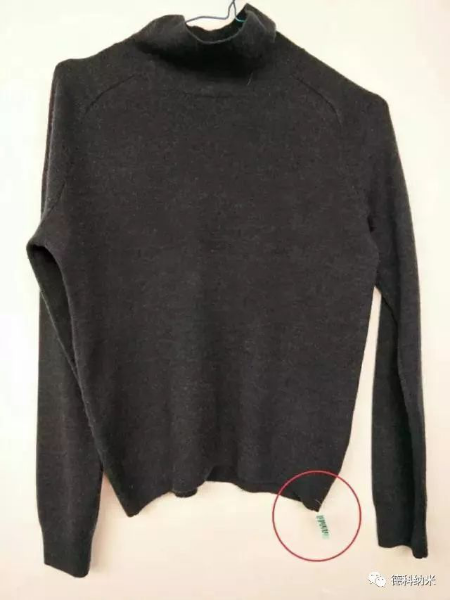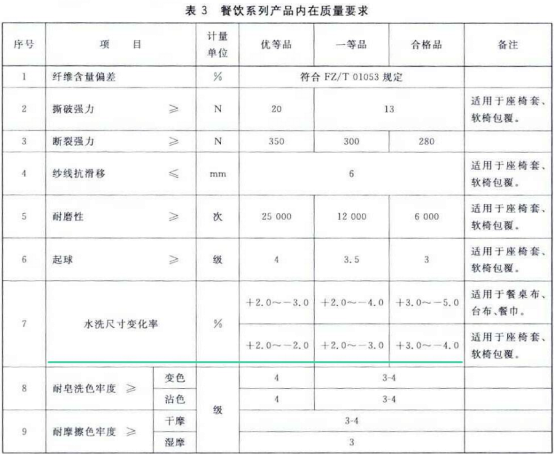




Shrinkage is a phenomenon that changes the length or width of textiles in a certain state after washing, dehydrating, and drying. The degree of shrinkage involves different types of fibers, the structure of the fabric, different external forces acting on the fabric, etc., and has different performances.

The smallest shrinkage rate was synthetic fibers and blended textiles, followed by woolen, hemp, and cotton fabrics, silk fabrics had a larger shrinkage, and the largest were viscose fibers, rayon, and artificial wool fabrics. Objectively speaking, there is a problem of shrinkage and fading in cotton fabrics. The key is the finishing. Therefore, the fabrics of home textiles are generally pre-shrinked. It is worth noting that after the pre-shrinking treatment does not mean not shrinking, but means that the shrinkage rate is controlled within 3% -4% of the national standard. Therefore, when choosing hotel linen, in addition to selecting the quality, color and pattern of the fabric, the shrinkage rate of the fabric should also be understood.
1. Reasons for fabric shrinkage
1. When the fiber is spinning, or when the yarn is weaving and dyeing, the yarn fibers in the fabric are stretched or deformed by external forces, and the internal stress of the yarn fibers and the fabric structure is generated. In the static wet relaxation state, or in the dynamic wet relaxation state and the fully relaxed state, the stress is released to varying degrees, so that the yarn fibers and fabric return to the original state.
2. Different fibers and their fabrics have different degrees of shrinkage, mainly depending on the characteristics of their fibers-the degree of shrinkage of hydrophilic fibers, such as cotton, hemp, viscose and other fibers; and the degree of shrinkage of hydrophobic fibers Less, such as synthetic fibers.
3. When the fiber is in a wet state, the fiber swells due to the immersion solution, which makes the fiber diameter larger. For example, on the fabric, the fiber curvature radius of the interwoven point of the fabric is increased, resulting in a shortened fabric length. For example, cotton fiber swells under the action of water, its cross-sectional area increases by 40-50%, and its length increases by 1-2%, while synthetic fibers shrink to heat, such as boiling water, and so on, generally about 5%.
4. Under the condition that the textile fiber is heated, the shape and size of the fiber changes and shrinks, and it cannot return to the original state after cooling, which is called fiber heat shrinkage. The percentage of length before and after heat shrinkage is called the heat shrinkage rate. It is generally expressed by the boiling water shrinkage test. In 100 ° C boiling water, the percentage of fiber length shrinkage is expressed. It is also possible to use the hot air method at more than 100 ° C.
The percentage of shrinkage can be measured in hot air, and the percentage of shrinkage can also be measured in steam over 100 ℃. The fiber also behaves differently under different conditions such as internal structure and heating temperature and time. For example, the boiling water shrinkage of processed polyester staple fiber is 1%, the boiling water shrinkage of vinylon is 5%, and the shrinkage of chloroflon hot air is 50%. Fibers are closely related to the dimensional stability of textile processing and its fabric, and provide some basis for the design of subsequent processes.

Second, the factors that cause the fabric to shrink
1. Different raw materials have different shrinkage rates. Generally, fibers with high hygroscopicity will swell after immersion in water, the diameter will increase, the length will be shortened, and the shrinkage will be large. If the viscose fiber has a water absorption rate of up to 13%, and the synthetic fiber fabric has poor hygroscopicity, its shrinkage rate is small.
2. Yarn (thread) is made of fibers arranged by twisting around the yarn axis, and its dimensional change in water is not only related to the nature of the fiber, but also to its structure such as twist and tightness. Generally speaking, fabric yarns have different thicknesses and shrinkage rates. The shrinkage rate of the thick yarn count fabric is large, and the shrinkage rate of the thin yarn count fabric is small.
3. Different fabrics have different shrinkage rates. If the meridional and zonal densities are similar, the meridional and zonal shrinkage rates are also close. For fabrics with high warp density, the shrinkage in the warp direction is greater. Conversely, for fabrics with a weft density greater than in the warp density, the weft shrinkage is also greater. Generally, the dimensional stability of high-density fabrics is better than low-density fabrics.
4. Different fabric production processes have different shrinkage rates. In general, during the weaving and dyeing of fabrics, the fibers must be stretched multiple times, the processing time is long, and the shrinkage rate of the fabric with a large applied tension is large, and vice versa. In order to control the width of the fabric, in the actual process, we generally use pre-shrink to solve this problem (discussed in the finishing post).
5, washing care, including washing, drying, ironing, each of these three steps will affect the shrinkage of the fabric. For example, the dimensional stability of hand washing is better than that of machine washing, and the temperature of washing will also affect its dimensional stability. In general, the higher the temperature, the worse the stability.
Choosing a suitable ironing temperature according to the composition of the fabric can also improve the shrinkage of the fabric. For example, cotton and linen fabrics can be reduced in size by ironing at high temperatures. But the higher the temperature, the better. For synthetic fibers, high-temperature ironing will not only improve its shrinkage, but will also damage its performance, such as fabrics that are hard and brittle.
Shrinkage of general fabrics
The "shrinkage rate" is formally called "washing dimensional change rate" and refers to the percentage of shrinkage of a textile after washing or immersion in water.
Shrinkage = (size before washing-size after washing) / size before washing × 100%
Under normal circumstances
Cotton 4%-10%;
Cotton mercerized plain weave: shrinkage ratio of 3.5% in warp and 3.5% in weft;
Twill is 4%;
Cotton mercerized twill: shrinkage 4% in warp and 3% in weft;
Cotton plain cloth: Shrinkage ratio is 6% in warp and 2.5% in weft;
Cotton polyester 3.5%-5 5%;
Chemical fiber 4%-8%;
Hotel textile shrinkage
Hotel textile shrinkage rate can refer to
GB / T 8628 Textiles Preparation, marking and measurement of fabric samples and clothing in tests for determining dimensional changes (GB / T 8628-2001, eqvISO3759: 1994)
GB / T 8629 Textile household washing and drying procedures for testing (GB / T 8629-2201, eqvISO6330: 2000)
GB / T 8630 Textiles-Determination of dimensional change after washing and drying (GB / T 8630-2002, ISO 5077: 1984, MOD)
GB / T 22800-2009 Textiles for star-rated tourist hotels (below) 4.3.1 Intrinsic quality

Angora goat hair, also known as Angora goat wool, is typical of long-gloss long wool, belo......
There are two types of knitting: hand knitting and machine knitting.Hand-knitting uses sti......
1.BarreFor knitted fabrics, this defect is characterized by the presence of uneven pattern......
Shrinkage is a phenomenon that changes the length or width of textiles in a certain state ......
1. Content of velvet:The down content is the amount of down in down. Generally speaking, t......
Fiber is the prerequisite for the development of textile products. The colorful textile pr......
An electrostatically charged object approaches or contacts another object, and as long as ......